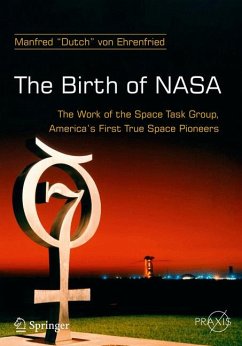This is the story of the work of the original NASA space pioneers; men and women who were suddenly organized in 1958 from the then National Advisory Committee on Aeronautics (NACA) into the Space Task Group. A relatively small group, they developed the initial mission concept plans and procedures for the U. S. space program. Then they boldly built hardware and facilities to accomplish those missions. The group existed only three years before they were transferred to the Manned Spacecraft Center in Houston, Texas, in 1962, but their organization left a large mark on what would follow.
Von Ehrenfried's personal experience with the STG at Langley uniquely positions him to describe the way the group was structured and how it reacted to the new demands of a post-Sputnik era. He artfully analyzes how the growing space program was managed and what techniques enabled it to develop so quickly from an operations perspective. The result is a fascinating window into history, amply backedup by first person documentation and interviews.
Dieser Download kann aus rechtlichen Gründen nur mit Rechnungsadresse in A, B, BG, CY, CZ, D, DK, EW, E, FIN, F, GR, HR, H, IRL, I, LT, L, LR, M, NL, PL, P, R, S, SLO, SK ausgeliefert werden.









